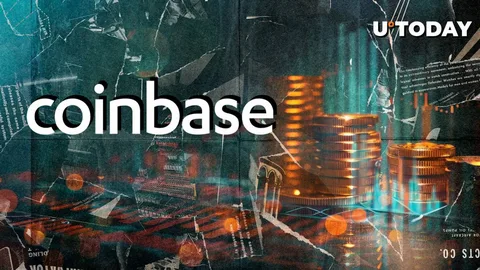Introduction
Cryptocurrencies have become an integral part of the financial ecosystem, with stablecoins gaining significant popularity as a relatively less volatile alternative to traditional cryptocurrencies. However, recent news has sparked concerns about the potential delisting of stablecoins from major exchanges like Coinbase.
If you are an investor or someone who closely follows the crypto space, Coinbase’s potential delisting of stablecoins is a topic you cannot afford to ignore. Understanding the dynamics behind this decision, the reasons why it may happen, and its broader implications is essential to making informed choices in the crypto landscape.
This blog post aims to delve deep into the subject of Coinbase, potential delisting, and stablecoins. We will explore what stablecoins are, why exchanges like Coinbase may consider delisting them, how this might affect the broader market, and what this means for investors.
By the end of this piece, you’ll have a thorough understanding of the potential risks and opportunities that could arise from this pivotal decision.

Understanding Stablecoins: A Brief Overview
Stablecoins are a unique breed of cryptocurrency, designed to maintain a stable value by being pegged to a reserve asset such as the U.S. dollar, euro, or even commodities like gold. Unlike highly volatile cryptocurrencies like Bitcoin or Ethereum, stablecoins aim to reduce price fluctuations, offering users a more stable form of digital currency for trading, investing, or everyday transactions.
Types of Stablecoins
Stablecoins can be categorized into three primary types based on their underlying collateral:
- Fiat-Collateralized Stablecoins: These are the most common type, backed by a reserve of fiat currencies like the U.S. dollar or euro. Tether (USDT) and USD Coin (USDC) are popular examples.
- Crypto-Collateralized Stablecoins: Backed by reserves of other cryptocurrencies. The value of these stablecoins is generally over-collateralized to account for the volatile nature of the reserve assets. Examples include DAI.
- Algorithmic Stablecoins: These are not backed by any assets but rely on algorithms and smart contracts to manage the supply and maintain stability.
Stablecoins have gained popularity for their utility in decentralized finance (DeFi) applications, cross-border payments, and as a safe haven during periods of market volatility. Given their key role in the cryptocurrency ecosystem, news of Coinbase’s potential delisting of stablecoins raises important questions about the future of digital finance.
Coinbase and Stablecoins
Coinbase, one of the largest cryptocurrency exchanges globally, lists multiple stablecoins, including USD Coin (USDC), Dai (DAI), and Tether (USDT). With its reputation for regulatory compliance and user-friendly interface, Coinbase serves millions of users who rely on stablecoins for liquidity, savings, and trading opportunities.
Given this background, the potential delisting of stablecoins from Coinbase has caused ripples in the crypto community. Many wonder why a major exchange like Coinbase would consider such a move, especially when stablecoins are seen as an integral part of its trading ecosystem.
This leads us to the next section, where we explore the reasons behind Coinbase’s potential delisting of stablecoins and its broader implications.
Why Would Coinbase Consider Delisting Stablecoins?
The potential delisting of stablecoins by Coinbase is not a decision that would be taken lightly. Several factors could influence this move, ranging from regulatory concerns to market dynamics. Let’s examine the key reasons why this may be on the horizon.
1. Regulatory Scrutiny
Stablecoins have increasingly attracted the attention of regulators worldwide. Governments and financial watchdogs are concerned about the potential risks stablecoins pose to the global financial system. Since stablecoins are often tied to fiat currencies, they function as a bridge between the traditional financial system and the cryptocurrency market. However, regulators worry that without proper oversight, stablecoins could become a tool for money laundering, tax evasion, or even market manipulation.
In the U.S., stablecoins like USDC and USDT are under increasing regulatory pressure. The Financial Stability Oversight Council (FSOC) has voiced concerns about their potential to undermine financial stability, urging for stricter regulations on stablecoin issuance and management. Coinbase, which prides itself on its commitment to regulatory compliance, may preemptively delist certain stablecoins to avoid getting entangled in a potential legal quagmire.
In addition to U.S. regulations, Coinbase operates in several jurisdictions globally. With different countries taking varied approaches to stablecoin regulation, complying with all these regulations can become increasingly complex. Delisting stablecoins could be a strategic move by Coinbase to ensure it remains compliant across multiple markets, thereby protecting its reputation and avoiding costly fines or sanctions.
2. Market Manipulation and Risk Concerns
The transparent nature of blockchain technology ensures that market participants can track the supply and movements of stablecoins. However, some stablecoins, especially algorithmic ones, are perceived as vulnerable to market manipulation. One well-known example is TerraUSD (UST), an algorithmic stablecoin that collapsed in 2022, wiping out billions of dollars from the market.
The failure of algorithmic stablecoins like UST has raised concerns about the risk management practices surrounding stablecoins. Coinbase, as a trusted platform, may fear that the listing of risky stablecoins could lead to similar issues, potentially harming its users and tarnishing its reputation. By delisting certain stablecoins, especially those that are less transparent or deemed risky, Coinbase could be attempting to safeguard its user base from potential losses.
3. Competition and Strategic Alignment
Coinbase has a vested interest in its native stablecoin, USD Coin (USDC), which it co-founded with Circle. As competition among stablecoins intensifies, it would make sense for Coinbase to focus on promoting USDC over its rivals, such as Tether (USDT) and Dai (DAI). The potential delisting of these competing stablecoins may be part of a broader strategy to increase the adoption of USDC and establish it as the stablecoin of choice on the platform.
Additionally, by aligning itself with USDC, Coinbase can maintain greater control over the issuance, governance, and regulatory compliance of the stablecoin. This reduces Coinbase’s exposure to risks associated with third-party stablecoins, many of which have opaque reserves or governance structures.
4. Liquidity and Market Dynamics
Another potential reason for Coinbase’s delisting of stablecoins could be liquidity concerns. While stablecoins like USDC and USDT enjoy significant liquidity, not all stablecoins have the same level of market depth. Listing low-liquidity stablecoins can result in price slippage and unreliable trading experiences for users, which Coinbase would want to avoid.
In a market with thin liquidity, the exchange may struggle to maintain a consistent peg to the fiat currency, defeating the purpose of stablecoins. Therefore, delisting stablecoins with low liquidity could help Coinbase streamline its offerings and improve the user experience for those trading in more popular, liquid stablecoins.
How Might the Potential Delisting of Stablecoins Impact the Market?
The potential delisting of stablecoins from Coinbase could have far-reaching implications for both the cryptocurrency market and its users. Let’s explore some of the key impacts that could arise.
1. Reduced Liquidity in the Crypto Ecosystem
Stablecoins play a critical role in maintaining liquidity across various cryptocurrency markets. Traders and investors use them as a safe haven during periods of high volatility or as a means of entering and exiting positions without converting back to fiat. If Coinbase decides to delist stablecoins like USDT or DAI, liquidity could be impacted on a larger scale, not just within the exchange but across the broader market.
Since Coinbase is a major player in the global crypto exchange market, any changes in its stablecoin listings could ripple through other exchanges, potentially leading to liquidity shortages or increased volatility. Market participants may also see fewer options for diversifying their portfolios with stablecoins, which could drive them to seek alternative platforms or stablecoins to manage their risk.
2. Price Volatility and Peg Stability
One of the defining features of stablecoins is their ability to maintain a steady value, usually pegged to a fiat currency like the U.S. dollar. However, delisting could create uncertainty about the peg stability of certain stablecoins, especially if liquidity is adversely affected.
For instance, if Coinbase delists a popular stablecoin like USDT, the reduced access on a major platform could cause a temporary imbalance in the supply and demand of the token. In extreme cases, this imbalance might challenge the stablecoin’s peg, leading to fluctuations in its value. Such volatility could shake investor confidence, leading to panic selling or speculative trading.
3. Shift Toward Decentralized Exchanges (DEXs)
As regulatory scrutiny increases, centralized exchanges like Coinbase face growing pressure to comply with various legal frameworks. This makes them more likely to delist assets that could potentially run afoul of regulations. However, decentralized exchanges (DEXs) are less susceptible to this kind of regulatory oversight due to their peer-to-peer nature and lack of centralized control.
If stablecoins are delisted from major centralized exchanges like Coinbase, users may migrate toward decentralized platforms where they can continue to trade these assets freely. This shift could further accelerate the growth of the decentralized finance (DeFi) ecosystem, with DEXs playing an even more prominent role in the crypto space.
4. Impact on Stablecoin Issuers
The delisting of a stablecoin from a major exchange like Coinbase could have a profound effect on the issuer of the stablecoin. Issuers rely on liquidity and market confidence to maintain the stability of their coins. When an exchange as prominent as Coinbase stops supporting a stablecoin, it sends a negative signal to the market, potentially causing a decline in demand and trust.
This could result in reduced adoption of the stablecoin, making it harder for the issuer to maintain the peg or offer liquidity in other markets. For smaller or newer stablecoin projects, the consequences of delisting could be even more severe, potentially leading to their collapse.
What This Means for Investors
For investors, Coinbase’s potential delisting of stablecoins presents both risks and opportunities. Here’s what you need to know to navigate the possible changes.
1. Portfolio Diversification
If Coinbase delists certain stablecoins, investors may need to rethink their portfolio diversification strategies. Stablecoins are often used as a way to hedge against market volatility, and if fewer options are available on Coinbase, investors may need to explore alternative platforms or assets to achieve their desired level of diversification.
2. Regulatory Landscape and Compliance Risks
Investors should be mindful of the evolving regulatory landscape surrounding stablecoins. As authorities impose stricter regulations on stablecoin issuers and exchanges, the risk of further delistings increases. Staying informed about regulatory developments and ensuring that your assets are compliant with these regulations is essential to minimizing legal risks and protecting your investments.
3. Liquidity and Trading Opportunities
The delisting of stablecoins from Coinbase could affect liquidity and trading opportunities, particularly for traders who rely on stablecoins for quick access to liquidity. Investors may want to assess the liquidity of the stablecoins they hold and consider alternative platforms if liquidity becomes an issue.
Conclusion
Coinbase’s potential delisting of stablecoins could be a significant turning point for the cryptocurrency market. Whether driven by regulatory concerns, market risks, or strategic alignment, this decision has the potential to impact liquidity, volatility, and investor behavior across the crypto landscape.
For traders and investors, understanding the underlying reasons and potential outcomes is crucial for making informed decisions in an ever-evolving market. As we wait for further developments, it’s essential to stay updated on the latest news regarding Coinbase, potential delisting, and stablecoins.
What are your thoughts on the potential delisting of stablecoins from Coinbase? Do you believe it will have a lasting impact on the market? Let us know your views in the comments below!






